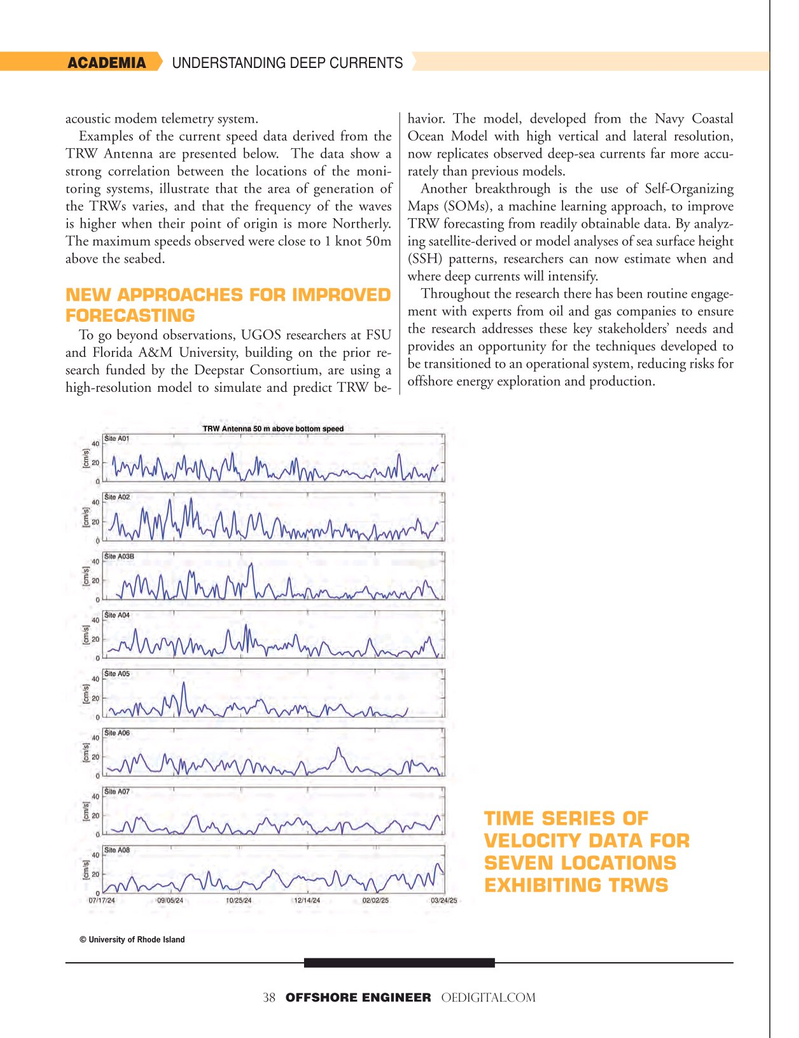
Page 38: of Offshore Engineer Magazine (Jul/Aug 2025)
Read this page in Pdf, Flash or Html5 edition of Jul/Aug 2025 Offshore Engineer Magazine
ACADEMIA UNDERSTANDING DEEP CURRENTS acoustic modem telemetry system. havior. The model, developed from the Navy Coastal
Examples of the current speed data derived from the Ocean Model with high vertical and lateral resolution,
TRW Antenna are presented below. The data show a now replicates observed deep-sea currents far more accu- strong correlation between the locations of the moni- rately than previous models.
toring systems, illustrate that the area of generation of Another breakthrough is the use of Self-Organizing the TRWs varies, and that the frequency of the waves Maps (SOMs), a machine learning approach, to improve is higher when their point of origin is more Northerly. TRW forecasting from readily obtainable data. By analyz-
The maximum speeds observed were close to 1 knot 50m ing satellite-derived or model analyses of sea surface height above the seabed. (SSH) patterns, researchers can now estimate when and where deep currents will intensify.
Throughout the research there has been routine engage-
NEW APPROACHES FOR IMPROVED ment with experts from oil and gas companies to ensure
FORECASTING
To go beyond observations, UGOS researchers at FSU the research addresses these key stakeholders’ needs and provides an opportunity for the techniques developed to and Florida A&M University, building on the prior re- search funded by the Deepstar Consortium, are using a be transitioned to an operational system, reducing risks for offshore energy exploration and production.
high-resolution model to simulate and predict TRW be-
TIME SERIES OF
VELOCITY DATA FOR
SEVEN LOCATIONS
EXHIBITING TRWS © University of Rhode Island 38 OFFSHORE ENGINEER OEDIGITAL.COM

 37
37

 39
39